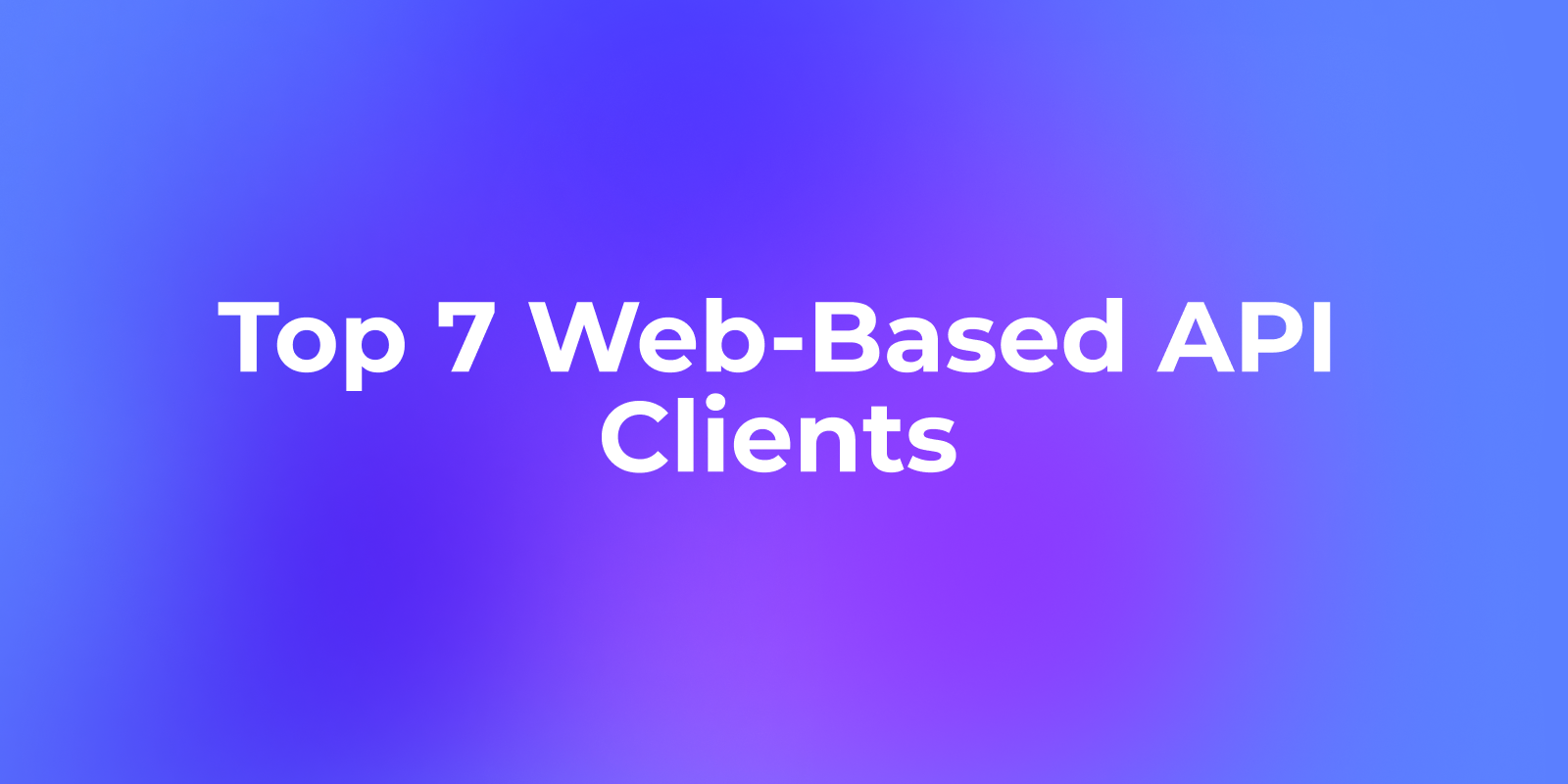When it comes to API development and testing, Postman is one of the most popular tools in the industry. However, many developers and businesses face a common dilemma: should they stick with the free version of Postman, or upgrade to the paid version? In this post, we'll break down the key differences between the free and paid tiers of Postman, explore alternative options like Apidog, and help you make an informed decision.
Now, let's get into the details of Postman's free and paid plans, and see which one might be the right fit for your API needs.
Why Choose an API Testing Tool?
Before comparing the free and paid versions of Postman, it's essential to understand why an API testing tool is so valuable. Whether you're a developer, QA engineer, or product manager, the ability to test APIs quickly and accurately is crucial. API testing helps ensure that your applications are functioning as expected, reducing bugs and improving user experience.

API tools like Postman simplify the process by allowing you to automate tests, mock responses, and collaborate on API design. They provide a user-friendly interface where you can send requests to your APIs and check the responses. This can be particularly helpful in continuous integration/continuous deployment (CI/CD) environments where code changes are frequent.
With that in mind, let’s look at what Postman has to offer and why you may consider alternatives like Apidog.
The Difference Between Postman Free and Paid Plans
1. Overview of Postman Plans
Postman offers a tiered pricing model, starting with the free plan, followed by the Basic, Professional, and Enterprise plans. Here's a quick look at each plan:
- Free Plan: Ideal for individuals and small projects with basic API testing needs. It comes with essential features for sending requests, creating collections, and limited collaboration.
- Basic Plan ($12/user/month): Suitable for small teams that require advanced collaboration tools, higher API call limits, and some additional automation features.
- Professional Plan ($29/user/month): Designed for larger teams needing robust collaboration features, enhanced security controls, and unlimited workspaces.
- Enterprise Plan (Custom Pricing): Tailored for organizations that need comprehensive support, governance controls, and enterprise-grade security.

While the free plan is often sufficient for basic use cases, upgrading to a paid plan unlocks advanced features that can significantly improve your workflow.

2. Core Features: Free vs. Paid
a. API Call Limits
- Free Plan: Users get 1,000 monthly API calls and 1,000 monitoring calls. While this may be enough for small projects or personal use, it can quickly become a limitation for larger teams or more complex applications.
- Paid Plans: Higher-tier plans offer increased monthly API call limits, with the Professional plan providing 50,000 API calls and 100,000 monitoring calls.
b. Workspaces and Collaboration
- Free Plan: The free version limits you to three shared workspaces, making it harder for larger teams to manage multiple projects. You can also have up to 25 shared requests per workspace.
- Paid Plans: Upgrading to a paid plan unlocks unlimited workspaces, advanced collaboration features, and role-based access control. This is especially useful for larger teams working on multiple projects.
c. Automation and Integration
- Free Plan: Basic automation features such as writing tests in JavaScript and manual integration with CI/CD tools are available.
- Paid Plans: The paid plans offer advanced automation capabilities, including native CI/CD integration and customizable monitoring intervals (down to five minutes). This is particularly beneficial for teams practicing continuous integration.
d. Security Features
- Free Plan: Offers basic security features like encrypted connections.
- Paid Plans: Higher security controls are available, such as Single Sign-On (SSO), Audit Logs, and Role-Based Access Control (RBAC), which are crucial for organizations that prioritize data security.
When Does It Make Sense to Upgrade?
1. For Team Collaboration
If you are part of a larger team, or if you frequently collaborate on API development, the limitations of the free plan can quickly become apparent. The three shared workspaces limit can be restrictive, especially if your organization works on multiple projects simultaneously.
2. For High-Volume API Testing
Developers working on large-scale applications often exceed the API call limits of the free plan. If your usage exceeds the 1,000 monthly API calls, you’ll either need to purchase additional capacity or upgrade to a paid plan.
3. For Enhanced Security Needs
Organizations that require higher levels of security and governance, especially those in industries like finance or healthcare, will find the paid plans essential. Features such as Audit Logs and SSO help comply with industry regulations.
4. For Automation and Integration
Teams practicing continuous integration and continuous deployment (CI/CD) will benefit from the advanced automation and integration options available in the paid plans. Features like native CI/CD integration and more frequent monitoring intervals help ensure code quality and catch issues early.
Why Consider Alternatives Like Apidog?
While Postman is undoubtedly a leading tool in the API testing space, it’s not the only one. Apidog is an alternative that provides a cost-effective and feature-rich option for API development and testing.

Here’s why you might consider switching to Apidog:
1. Lower Cost
One of the biggest drawbacks of Postman’s paid plans is the monthly cost. Apidog offers competitive pricing, often at a lower cost than Postman's equivalent plans. If your goal is to maximize your budget, Apidog is worth exploring.

2. Powerful Features
Apidog comes with advanced features, including API design, documentation, mock services, and automated testing. It provides a comprehensive suite of tools to streamline your API workflow, all while being user-friendly.

3. Unlimited Testing
Unlike Postman, which has monthly API call limits, Apidog allows you to perform unlimited testing. This can be a game-changer for development teams that heavily rely on API tests during their development lifecycle.
4. Collaborative Workspaces Without Extra Cost
Apidog offers collaborative features without requiring you to upgrade to a higher-tier plan. You can manage multiple projects, assign roles, and collaborate with your team at a fraction of the cost compared to Postman.
5. Built-In CI/CD Integrations
While Postman requires a higher-tier plan to access advanced CI/CD integration, Apidog includes these features without additional costs. This can help teams adopt DevOps practices more easily.
6. Better Mock Services
Postman's mock services are available but may come with usage limitations on the free plan. Apidog offers more generous options, making it easier to simulate APIs during development without hitting usage caps.

Case Study: When Apidog Outperforms Postman
Let's look at a scenario where Apidog could be a better choice than Postman:
Scenario: Small Development Team with a Tight Budget
Imagine a small startup developing a mobile application that heavily relies on a RESTful API. They need to test their APIs frequently, collaborate on design, and integrate with a CI/CD pipeline. The team also wants to simulate API responses using mock servers.
- With Postman’s free plan, they face limitations on API calls, shared workspaces, and mock server usage.
- To overcome these limitations, they would need to upgrade to at least the Basic or Professional plan, costing $12-$29 per user per month.
- Instead, they choose Apidog, which offers unlimited testing, collaborative workspaces, and built-in CI/CD integrations at a lower cost.

In this case, Apidog helps the team save money while still getting the features they need to support development and testing.
Postman vs. Apidog: Side-by-Side Comparison
| Feature | Postman (Free) | Postman (Paid) | Apidog |
|---|---|---|---|
| Monthly Cost | Free | $12/user/month (Basic), $29/user/month (Professional) | Lower than Postman |
| API Call Limits | 1,000/month | Up to 50,000/month | Unlimited |
| Mock Services | Limited | Available with higher usage | Generous usage limits |
| Workspaces | 3 shared workspaces | Unlimited | Unlimited |
| Automation & Integration | Basic | Advanced (with more frequent monitoring) | Built-in CI/CD integrations |
| Security Features | Basic | SSO, RBAC, Audit Logs | Available without extra cost |
| CI/CD Integration | Manual | Native (Professional plan or higher) | Built-in |
Choosing the Right Tool for Your API Testing
At the end of the day, choosing between Postman free, Postman paid, or an alternative like Apidog depends on your specific needs:
- If you're an individual developer or working on small projects, Postman's free plan might suffice. However, be aware of its limitations in API call limits and collaboration features.
- If you're part of a large team or frequently collaborate, the paid plans will offer the necessary features for advanced collaboration, automation, and security.
- For those looking for a cost-effective, feature-rich solution, Apidog stands out as a compelling alternative. It offers unlimited API testing, built-in CI/CD integrations, and collaborative workspaces at a lower cost.
Conclusion
Choosing an API testing tool is a crucial decision that impacts your development workflow, team collaboration, and budget. While Postman is a well-established choice, it’s essential to evaluate your specific needs and consider alternatives like Apidog, which may offer better value for your use case.
Whether you go with Postman's free plan, upgrade to a paid plan, or try Apidog, make sure the tool aligns with your project requirements and long-term goals. And if you're looking for a feature-rich, budget-friendly option, don’t hesitate to download Apidog for free and start your API testing journey today.




